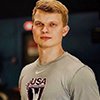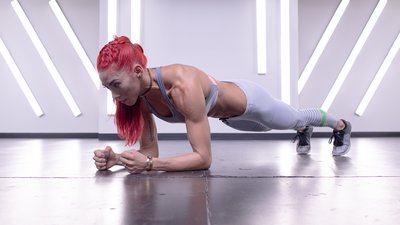Contrary to popular belief, the "abs" and the "core" are not one and the same. The abdominal muscles, which consist of the rectus abdominis and the internal and external obliques, work by flexing the spine. In contrast, the core encompasses the entire musculature of the trunk and works to stabilize the spine.
Sure, six-pack abs are aesthetically appealing, but training the abs while neglecting the core is like polishing the rims on a car that has no engine. The good news is that although their functions differ, ab training and core training don't have to be mutually exclusive. As a matter of fact, when done right, training to develop a strong, resilient core and working for a chiseled six-pack go hand in hand.
A well-developed core creates a strong, stable base that allows you to generate more force and, as a result, lift more weight. Charles Poliquin said it best: You can't fire a cannon out of a canoe. In the same manner, core strength is a crucial component of training longevity. By training your core, you improve your ability to resist movement at the trunk, preventing the spine from folding up like an accordion and significantly reducing the risk of injury.
The best way to train abs is vigorously debated. One camp argues that since the core's main role is to prevent unwanted motion at the spine, the only movements that should be performed are those that promote anti-extension, anti-rotation, and anti-lateral flexion. Another camp holds that lifters who chase abdominal hypertrophy at the expense of all else, bragging about their Rocky-esque, 2,000-crunches-per-day routine, are all but guaranteed to turn their spine into an atrophied pile of dust.
Then there are the lifters who argue that squats and deadlifts are all it takes to build a strong and aesthetically appealing midsection. Spend all day reading articles on ab training, and you're more likely to have nightmares about fat gain and spinal degeneration than you are to get any degree of clarity on the subject.
Who's right? Well, all of them...and none of them. Before you put on your pajamas and pack it in for the day due to a lack of brain glucose, hear me out: All methods of intelligent core training work synergistically, so you want to train to develop strong abs that also double as a cheese grater.
Let's look at the facts.
Fact 1: The Compound Lifts Aren't Enough
Pour one out, raise your glass for a toast, or do whatever you feel is necessary to pay homage to the compound lifts. While the benefits of squats, deadlifts, presses, etc., need no explanation, the reality is that they are not "all the core training you'll ever need."
Most (if not all) individuals need dedicated ab work to address weaknesses, imbalances, and alignment issues in order to stay healthy, build strength, and put on size over the long haul. In terms of aesthetics, developing a muscular midsection requires specific training that, as for any other muscle group, aligns with the tried-and-true principles of hypertrophy.
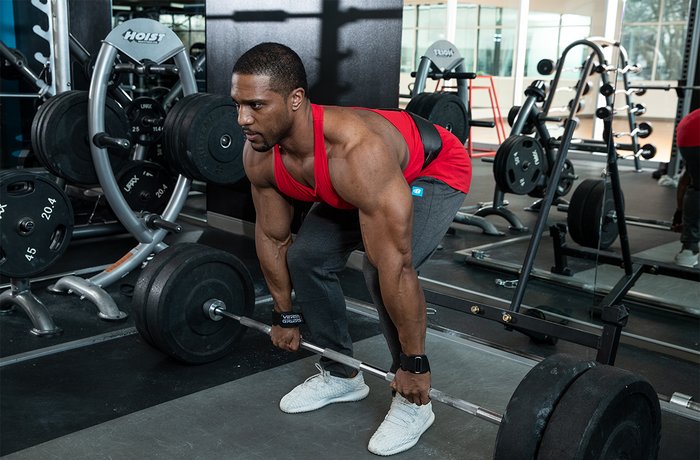
The compound lifts have merit in terms of engaging the core and creating full-body tension, but the benefits often stop there. Tell a group of strong lifters with impressive physiques to perform a solid RKC plank, and watch a number of them crack as easily as the screen on a first-generation iPhone.
Fact 2: Lumbar Flexion Is Not Your Friend
Due in large part to the work of Stuart McGill, Ph.D., a professor at the University of Waterloo at Waterloo, Ontario, movements involving lumbar flexion, like crunches, have gotten a bad rap, and for good reason. A simple analogy to give you an idea of its chronic effects is the bending of a credit card. Bend it once, and it's seemingly unaffected. Keep bending it and it slowly wears down until, finally, it breaks.
McGill has concluded that every repetition of a sit-up places more than 3,000 Newtons of compressive force on the spine. That's the equivalent of getting sandwiched by two, 300-pound defensive linemen moving at 24 miles per hour. Add the fact that most individuals spend the majority of their days sitting, and voilà—repeated lumbar flexion gets the big red X.
Instead of hammering flexion with more flexion, the right approach would aim to reinforce a neutral spinal position, engage the anterior core, and build trunk stability.
Fact 3: Not All Spinal Flexion Is Created Equal
Few issues in fitness are black or white, and spinal flexion is no exception. First and foremost, it's crucial to differentiate between lumbar flexion (at the lower back) and spinal flexion (throughout the entire spine).
By and large, there are three scenarios in which flexion should be avoided:
- When individuals are "stuck" in chronic flexion
- End-range lumbar flexion
- Loaded spinal flexion
Regarding the first point, people who sit at a desk all day need more anterior core work via stability-based exercises in addition to targeted mobility drills that encourage thoracic extension.

To expand on the second point, pushing end-range lumbar flexion is a roll of the dice. As the old adage goes, play with fire and you'll (eventually) get burned. Plus, what's the point? Whether your goal is to get stronger, build muscle, or uncover your long-forgotten six-pack, the last 2-3 inches of a crunch will hardly make the difference between a Pillsbury Doughboy midsection and shredded abs.
The third point, regarding loaded spinal flexion (or any spinal flexion, for that matter), is the topic with the grayest area. Can it be harmful? Sure. That said, when certain variables are accounted for and technique is dialed in, flexion can be useful from an aesthetic as well as a functional standpoint.
One commonly cited factor that puts the nail in spinal flexion's coffin is the manner in which many flexion-based core exercises are performed. While speed can be a form of progression, not all speed progressions are created equal either. In the case of ab training, slow reps are not only more demanding but also significantly more effective for aesthetics as well as function.
As speed increases, the risk of compensation skyrockets. The result is poor execution and, consequently, a huge amount of stress on the lower back and thoracic spine and little to no aesthetic benefit. The abdominals respond best to sets that emphasize time under tension, which is done by performing slow reps throughout a controlled range of motion.
By the same token, incorporating isometric holds is a powerful way to develop a stronger, more resilient, and better-looking midsection. Iso-holds accentuate the mind-muscle connection, dial in optimal mechanics, and strengthen the trunk—all while increasing the recruitment of the rectus abdominis, the internal and external obliques, and the deep stabilizers of the spine and pelvis.
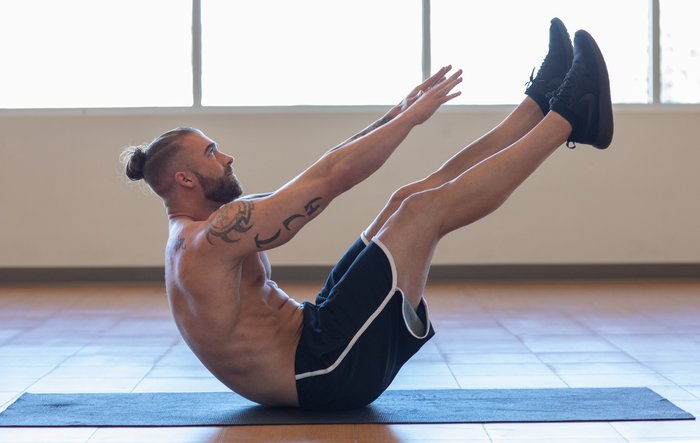
While avoiding end-range flexion, choose movements from the following list and go through a controlled range of motion. Lower for 2-3 seconds and incorporate 2-3-second iso-holds at the top position, placing a focus on a strong mind-muscle connection. To maintain a strong brace and avoid losing tension, do a 1-2-second iso-hold at the bottom of the movement to re-recruit tension and stability before each rep.
Assuming perfect execution, some of the best spine-sparing, flexion-based exercises are reverse crunches, hollow-body holds, arms-extended stability ball crunches, straight-leg sit-ups, V-ups, and certain roll-out progressions.
Fact 4: You Should Train to Resist Unwanted Movement at the Spine
The "anti-movement" camp is right in that the core serves two primary tasks. First, it resists unwanted movement at the spine in order to reduce the incidence of acute and/or chronic injury. Second, a strong core links the upper and lower body to create strength and power.
In other words, the body becomes more resilient to injury and increasingly able to exert maximal strength and power with anti-movement training. The three pivotal categories of anti-movements are anti-extension, anti-rotation, and anti-lateral flexion.
Anti-extension
As the name implies, the goal of anti-extension is to actively resist extension at the spine. This is especially valuable for most athletes and lifters. Baseball players, for example, spend most of their time standing in lumbar extension, as do lifters who emphasize exercises like deadlifts and chin-ups, which tend to shorten the lats and erectors in order to gain stability.
The common enemy among this demographic is anterior pelvic tilt, a fancy term used to describe a hyperextended lower back. Excessive anterior pelvic tilt can lead to a whole host of issues, including weak glutes, anterior knee and hip pain, and chronic pulled hamstrings.
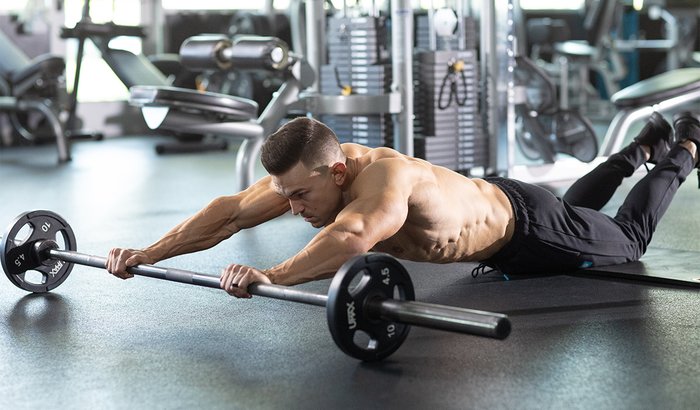
Most trainers and coaches begin to hyperventilate into a brown paper bag as soon as they see someone perform deadlifts with any degree of spinal flexion. Even so, constantly fighting against flexion means constantly fighting for extension, and, let's face it—unlike deadlifts, which require near-maximal exertion, the vast majority of lifts don't necessitate forceful extension.
On the other hand, a neutral position encourages optimal movement mechanics, facilitates a greater mind-muscle connection, and forces you to dial in your technique, thus enabling you to lift more weight in a safe manner. Ipso facto, anti-extension exercises like the following are valuable for promoting a neutral position that accomplishes those goals:
- Plank variations (RKC, long lever, push-up walk out)
- Suspension trainer fallout (standing, tall kneeling)
- Dead bug variations (regular, wall press, band-resisted, hollow hold)
- Roll-out variations (ab wheel, barbell, foam roller, Valslide)
- Bodysaw (stability ball, Valslide, bear crawl position)
Anti-rotation
Anti-rotation trains the core to prevent unwanted rotation at the spine. Although it's a simple concept, its role is absolutely crucial, as the act of rotating "correctly" rests upon the body's ability to stabilize against external rotary, or twisting, forces.
Whether you're performing rotational medicine ball throws or changing directions during a pick-up basketball game, rotation should stem from the hips, core, and shoulders—not the lower back. The problem is, most lifters and athletes who train rotation miss this necessary intermediary step. The result is faulty movement patterns and eventual dysfunction, especially when rotation becomes dynamic.
To generate maximal strength and power outside of the sagittal plane, the first step is to develop the ability to resist rotation at the spine. This enables the body to create optimal movement from the hips, core, and shoulders. So anti-rotation is key for developing stability and full-body synchronization that allows for the expression of maximal strength and power.
Here are some anti-rotational movements to try:
- Pallof press (standing, half kneeling)
- 3-point plank variations (shoulder tap, single-arm reach, single-leg lifts)
- Cable chop or lift (standing, half kneeling, wide stance)
- Quadruped variations (bird dog rows, band-resisted bird dogs)
- Push-up position kettlebell or plate transfer, or drag
Anti-lateral Flexion
Anti-lateral flexion exercises are those in which the body is forced to resist lateral flexion, or side bending. Think of the feeling that accompanies carrying unevenly weighted grocery bags from the car.
Lateral flexion is vastly misunderstood. Typical exercises that incorporate this movement, like side bends, are done with the intention of targeting the obliques. The problem is, the obliques don't respond well to dynamic movement; rather, they're targeted most effectively through the act of resisting motion while maintaining a maximally braced isometric position.
When it comes to anti-lateral flexion, nothing beats offset carries, which also build functional strength in the forearms, traps, and upper back. Regardless of the specific variation, the objective is to maintain full-body tension while remaining completely upright. When offset carries are done correctly, few check as many boxes in terms of improving strength, aesthetics, and overall function.
Here are some examples:
- Suitcase carry
- Racked kettlebell carry
- Waiter's carry
- Offset trap-bar carry
- Bottoms-up single-arm kettlebell carry
A number of "combination" core exercises train multiple anti movements simultaneously, including:
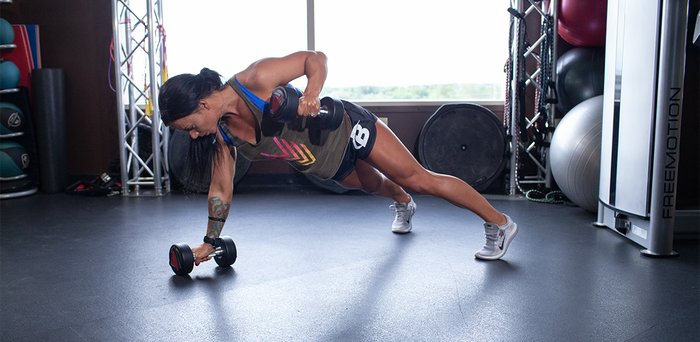
- Renegade row
- 3-point/side-plank row
- Pallof press dead bug
- Stability ball stir-the-pot
- Turkish get-up
Fact 5: You Can Chase Abdominal Hypertrophy and Build a Functional Core via "Hip Flexion with a Neutral Spine"
While some people are quick to dismiss this category, exercises that involve hip flexion with a neutral spine are arguably the most challenging—and effective—for the core muscles.
The benefits of this category are twofold. First, although "feel" is not required for hypertrophy, most ab workouts involving hip flexion facilitate the strongest mind-muscle connection in the rectus abdominis, aka the six-pack muscle. Second, learning to flex the hips while maintaining a neutral spine is an integral component of overall function. Exercises within this category force you to brace your anterior core without extending the lumbar spine while simultaneously grooving a non-compensatory hip flexion pattern. Case in point: Watch someone sprint.
Movements that involve hip flexion from a neutral position create the same feel as isolation exercises without placing undue stress on the spine, as is the case with crunches and sit-ups. For any muscle to grow, there's a need for high-tension exercises and significant time under tension in order to trigger metabolic stress and muscle damage.
These hip flexion core exercises check both boxes:
- Hanging knee or leg raise
- Pike variations (stability ball, suspension trainer, Valslide)
- Prone jackknife (stability ball, suspension trainer)
- Jackknife variations (band-resisted, single-leg)
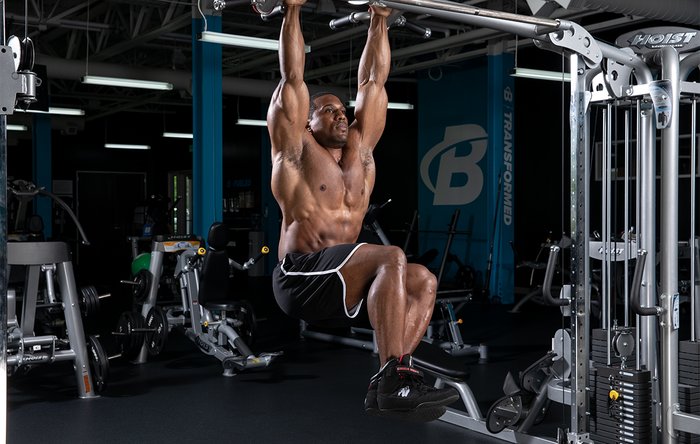
Putting It All Together
Building a strong, aesthetic midsection requires a synergistic mix of anti-movements, spine-friendly "feel-based" exercises, and progressive overload. The good news is, it's simple to fit a multi-faceted approach into your current training program.
- Mix core-based work into your training as "fillers." If you're resting between heavy sets of squats, something as simple as a Pallof press or reverse crunch can be effective without creating significant fatigue.
- A couple of times per week, after finishing a workout, set a timer for 6-8 minutes and pick 2-3 aesthetically focused ab exercises to complete as a circuit; for example, 8-10 reps of hanging knee raises, 6-8 stability ball crunches with a slow tempo and isometric holds, and 8-10 reps of ab wheel roll-outs.
- Target anti-lateral flexion by incorporating different types of carries. On top of building the obliques and enhancing function, carries develop strength in the forearms, shoulders, traps, upper back, and glutes.
- Modify your program to bias the core. Unilateral movements (reverse lunges, single-arm dumbbell presses, etc.) as well as chin-ups, Turkish get-ups, and renegade rows can provide a powerful training effect without sacrificing the use of sufficient loads.
- Hone in on maintaining a neutral position when performing movements that require any degree of stabilization. Something as basic as a face pull can work the core when you maintain full-body tension.
- Strive for progressive overload by manipulating different variables. Tread carefully when adding weight, as proper execution, or lack thereof, can be the cure or the poison.
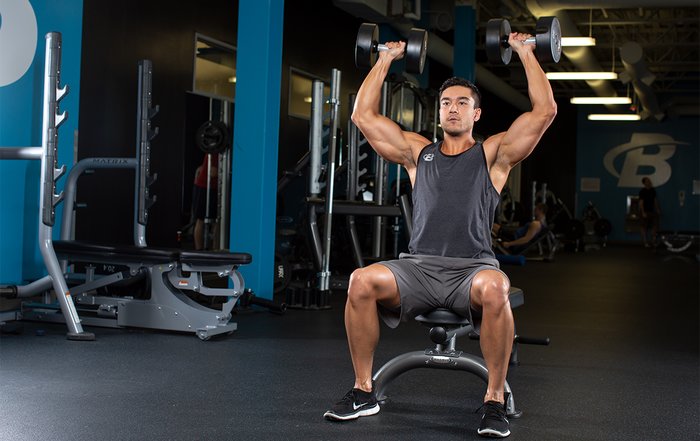
There are a wide variety of ways to progress your training:
- Reduce the number of ground contact points (e.g., 3-point plank).
- Accentuate eccentrics (e.g., hanging knee raise with straight-leg eccentric).
- Increase the ROM (e.g., roll-outs with a barbell).
- Take advantage of midrange iso-holds (e.g., pausing at the midrange of a reverse crunch).
- Use gravity to increase difficulty (e.g., feet-elevated long-lever plank).
- Create instability by using one limb at a time (e.g., single-leg jackknife).
- Incorporate multi-purpose exercises (e.g., Pallof press or dead bug).
Build muscle, gain strength, and get ripped with Total Fitness, available only in Bodybuilding.com BodyFit Elite
